- Symptoms of Plant Poisoning
- Common symptoms of plant poisoning include:
- Emergency actions for plant poisoning:
- Preventing plant poisoning:
- Conclusion:
- Popular Poisonous Houseplants to Avoid
- Poisonous Plants and Pets
- Dangers of Toxic Houseplants for Pets
- Common Symptoms of Plant Poisoning in Pets
- List of Common Toxic Indoor Plants
- Tips for Pet Safety
- Conclusion
- Identifying Toxic Plants
- Familiarize yourself with common toxic plants
- Observe the physical characteristics
- Refer to a comprehensive plant guide
- Consult a professional
- Safe Alternatives to Poisonous Houseplants
- 1. Spider Plant
- 2. Areca Palm
- 3. Boston Fern
- 4. African Violet
- 5. Bamboo Palm
- How to Safely Handle Toxic Plants
- 1. Wear Protective Gear
- 2. Wash Hands Thoroughly
- 3. Keep Plants Out of Reach
- 4. Educate Yourself
- 5. Display Warning Signs
- 6. Regularly Clean and Prune
- 7. Know What to Do in an Emergency
- Treating Plant Poisoning
- Q&A:
- Which indoor plants are poisonous to cats?
- What are the symptoms of plant poisoning in pets?
- Are all species of a specific plant poisonous?
- What are some non-toxic indoor plants?
- How do I keep my pets safe from poisonous houseplants?
- Can indoor plants be harmful to humans?
- Video: 8 Poisonous House Plants That Are Dangerous for Children and Pets
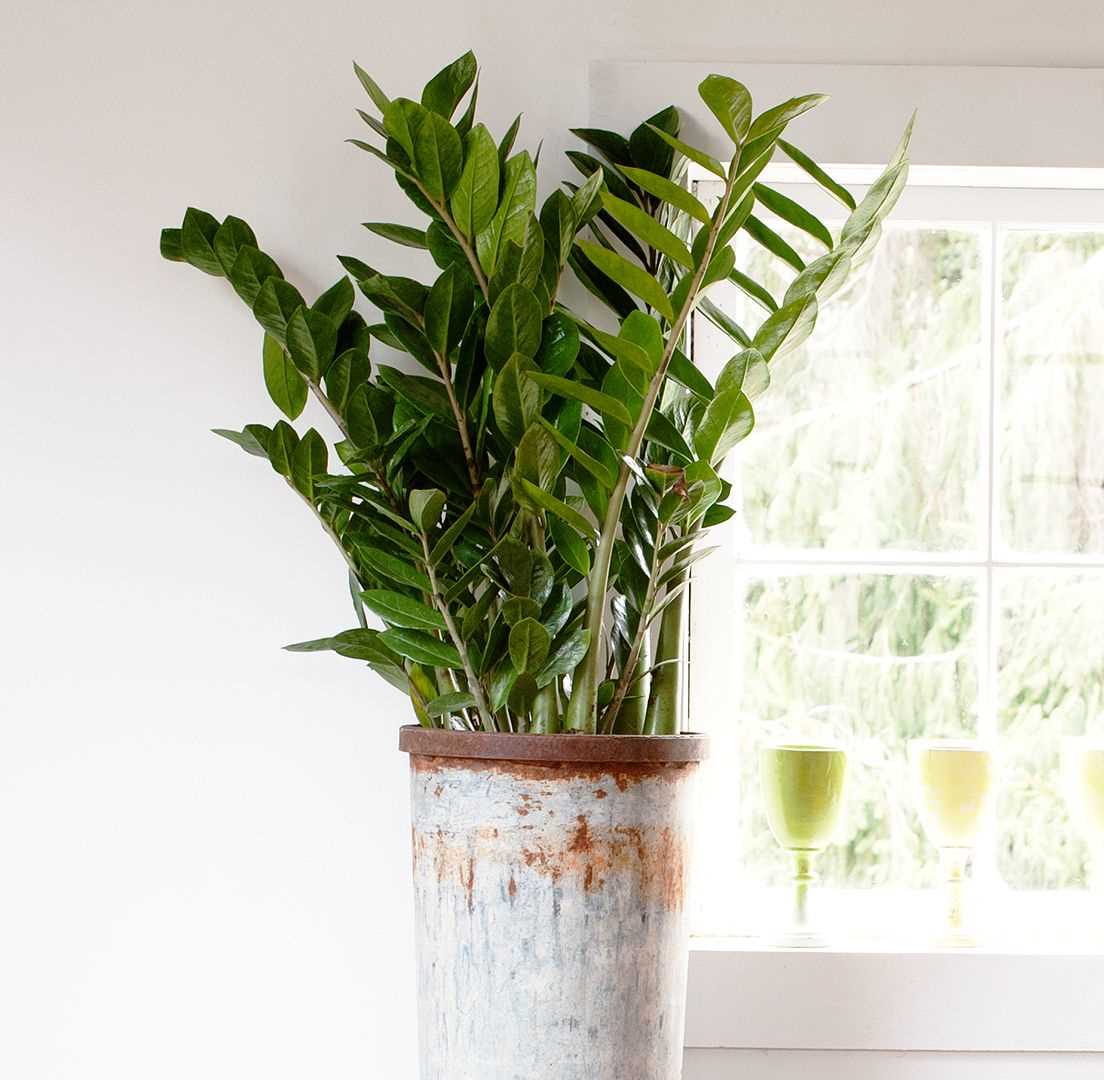
When it comes to decorating our homes, indoor plants have become an increasingly popular choice. They not only add a touch of natural beauty to our living spaces but also provide various mental and physical health benefits. However, not all indoor plants are harmless. In fact, some can be quite toxic or even deadly if ingested or touched.
This guide aims to shed light on the dangerous side of indoor plants and help you make informed decisions about the plants you choose to have in your home. Whether you have young children, curious pets, or simply want to ensure the safety of everyone in your household, being aware of poisonous indoor plants is essential.
Why are toxic plants used as houseplants?
Some may wonder why certain plants with toxic properties are even used as houseplants. One reason is that these plants are often aesthetically pleasing, with attractive leaves or colorful flowers. Additionally, some toxic plants are known for their air-purifying properties, making them popular choices for improving indoor air quality. However, the potential risks associated with toxic plants should not be underestimated.
“While the benefits of indoor plants are well-known, it’s crucial to be aware of the potential dangers they can pose.”
By familiarizing yourself with the harmful houseplants discussed in this guide, you can take appropriate precautions and ensure the well-being of your loved ones. Remember, knowledge is power when it comes to creating a safe and healthy home environment.
Symptoms of Plant Poisoning
Exposure to poisonous indoor plants can lead to a range of symptoms in humans and pets. The severity of these symptoms can vary depending on the individual and the specific plant involved.
Common symptoms of plant poisoning include:
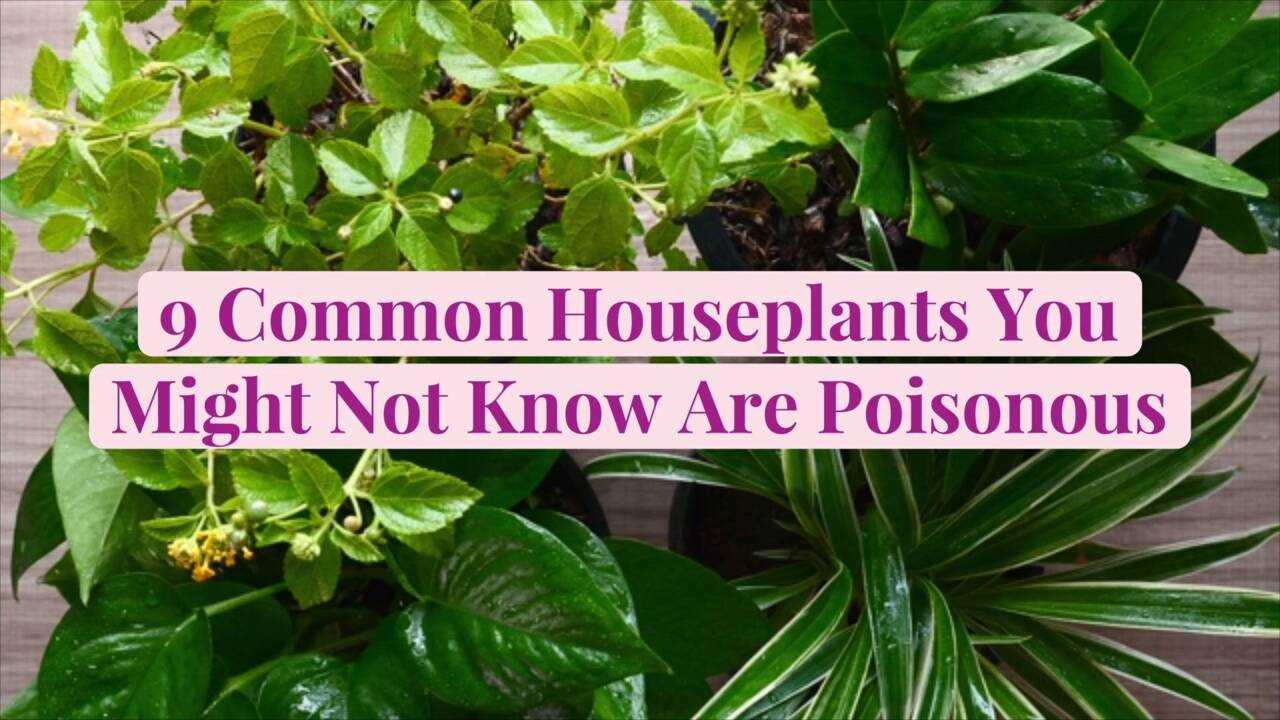
- Gastrointestinal issues: Nausea, vomiting, diarrhea, and abdominal pain are common symptoms. These can occur shortly after ingestion or within a few hours.
- Respiratory problems: Some toxic plants release compounds that can irritate the respiratory system. Symptoms include difficulty breathing, coughing, wheezing, and throat irritation.
- Skin irritation: Contact with certain plants can cause skin reactions such as redness, itching, rashes, and blisters. These symptoms typically occur within a few hours of contact.
- Eye irritation: Exposure to plant sap or fragments can irritate the eyes, leading to redness, watering, and discomfort.
- Neurological symptoms: In some cases, plant poisoning can affect the central nervous system, leading to symptoms such as dizziness, confusion, headaches, seizures, and even coma.
Emergency actions for plant poisoning:
If you or your pet show symptoms of plant poisoning, it is important to seek medical attention immediately. In case of emergency, call your local poison control center or go to the nearest emergency room. Be sure to provide as much information as possible about the plant involved, including its name and any identification you have.
Preventing plant poisoning:
To reduce the risk of plant poisoning, it’s important to familiarize yourself with the potentially toxic plants in your home and garden. Keep them out of reach of children and pets, and consider removing them altogether if you’re particularly concerned. It’s also a good idea to teach children about the dangers of eating or touching unfamiliar plants.
Conclusion:
Knowing the symptoms of plant poisoning can help you identify potential dangers and take appropriate action. By being aware of the risks and taking preventative measures, you can help ensure the safety of your household.
Popular Poisonous Houseplants to Avoid
When it comes to choosing houseplants, it’s important to consider the safety of your family members, including children and pets. Some common houseplants can be toxic if ingested, causing anything from mild irritations to serious health problems. Here are some popular houseplants that you should avoid having in your home:
Dumb Cane (Dieffenbachia): This leafy plant contains calcium oxalate crystals that can cause intense burning and swelling of the mouth, tongue, and throat if chewed or swallowed.
Peace Lily (Spathiphyllum): While known for its air purifying qualities, the peace lily can cause oral irritation, difficulty swallowing, and vomiting if ingested.
Philodendron: Philodendrons are popular houseplants, but they contain calcium oxalate crystals that can cause mouth and throat irritation, vomiting, and difficulty breathing if consumed.
Pothos (Devil’s Ivy): Pothos plants have a beautiful cascading growth pattern, but they are toxic to both cats and dogs. Ingestion can cause vomiting, swelling of the mouth and throat, and even kidney failure in severe cases.
If you have any of these plants in your home, it’s important to keep them out of reach of children and pets. If you suspect your child or pet has ingested any part of a poisonous houseplant, seek immediate medical or veterinary attention.
Poisonous Plants and Pets
Dangers of Toxic Houseplants for Pets
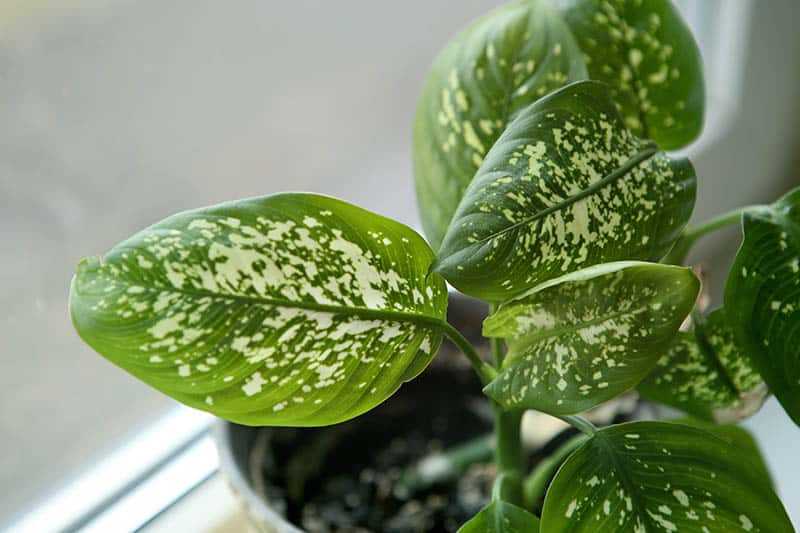
Many indoor plants can be toxic to pets if ingested. It’s essential for pet owners to be aware of the potential dangers associated with these plants to ensure the well-being of their furry friends.
Common Symptoms of Plant Poisoning in Pets
If a pet has ingested a toxic plant, there are several signs and symptoms that may indicate plant poisoning. These can include:
- Vomiting
- Diarrhea
- Excessive drooling
- Loss of appetite
- Lethargy
- Difficulty breathing
If you suspect that your pet has ingested a poisonous plant and is exhibiting any of these symptoms, it’s crucial to seek veterinary care immediately.
List of Common Toxic Indoor Plants
Here are some of the most common indoor plants that are toxic to pets:
- Dieffenbachia
- Philodendron
- Pothos
- Peace Lily
- Caladium
- Snake Plant
- Sago Palm
While this list is not exhaustive, it serves as a starting point for identifying potentially dangerous plants in your home.
Tips for Pet Safety
To keep your pets safe from toxic plants, consider the following precautions:
- Research and identify any potentially poisonous plants in your home.
- Keep toxic plants out of reach of your pets.
- Consider using hanging planters or shelves to keep plants away from curious pets.
- Introduce pet-friendly houseplants, such as spider plants or Boston ferns, to your home.
- Monitor your pet’s behavior and watch out for signs of plant ingestion.
Conclusion
Being aware of potentially toxic indoor plants is an essential aspect of pet safety. By taking necessary precautions and educating yourself about poisonous plants, you can provide a safe environment for your pets to thrive in.
Identifying Toxic Plants
Being able to identify toxic plants is essential for keeping your home environment safe for both human and pet inhabitants. Here are some tips on how to identify poisonous indoor plants:
Familiarize yourself with common toxic plants
There are certain plants that are known to be toxic to humans and pets. Some common examples include:
- Dieffenbachia: This popular houseplant contains oxalate crystals, which can cause severe mouth and throat irritation.
- Philodendron: The leaves of this plant contain calcium oxalate crystals, which can cause burning and swelling of the mouth and throat.
- Pothos: Also known as Devil’s Ivy, this plant contains crystals that are toxic when ingested and can cause digestive issues.
- Peace lily: This beautiful plant contains calcium oxalate crystals that can cause mouth and throat irritation.
Observe the physical characteristics
Take note of the physical characteristics of the plant, as certain features can be indicative of toxicity. These include:
- Shiny or waxy leaves
- Brightly colored leaves or berries
- Milky sap
- Thorny or prickly stems
Refer to a comprehensive plant guide
There are many comprehensive plant guides available that provide detailed information on the toxicity of various indoor plants. These guides often include photographs and descriptions to help you identify toxic plants in your home.
Consult a professional
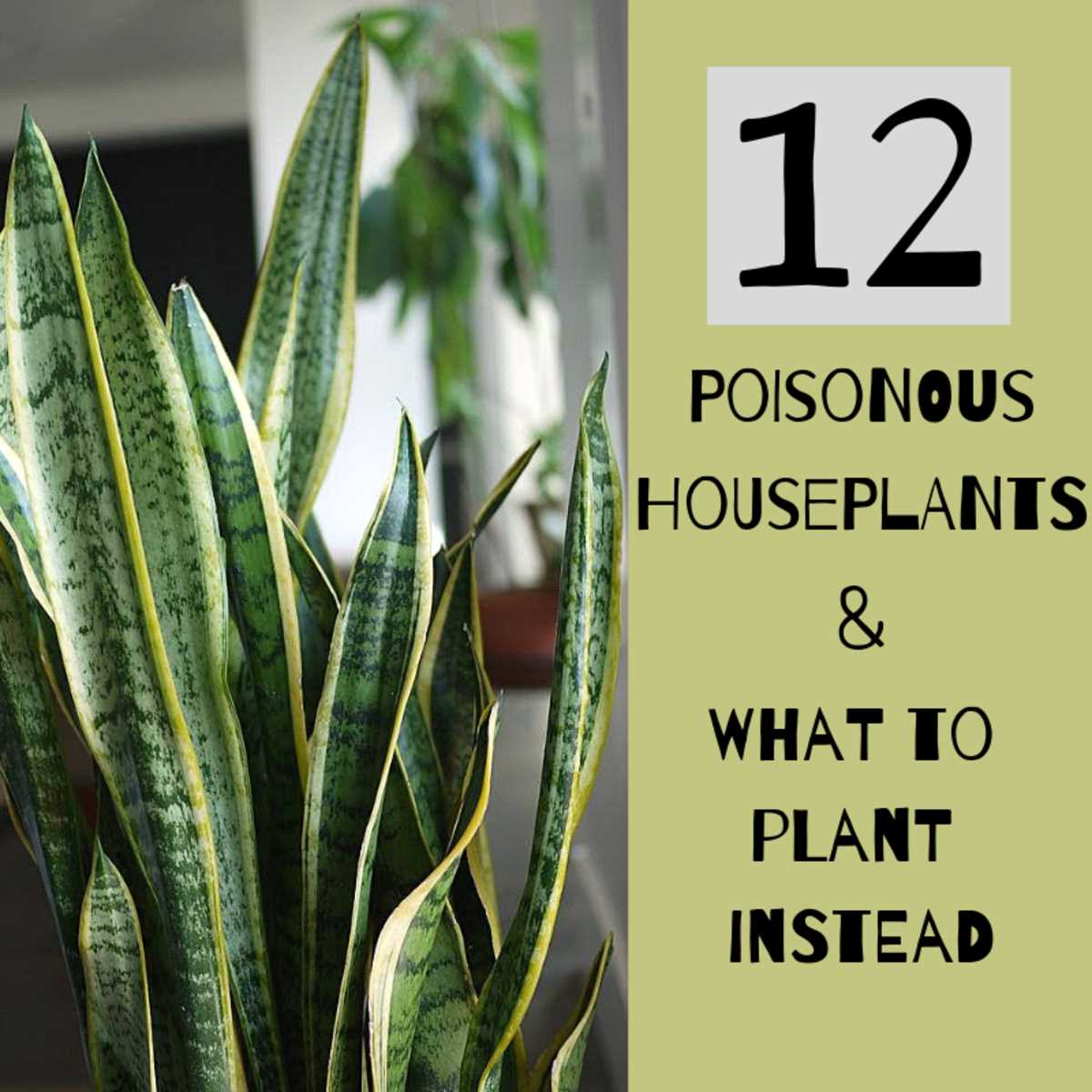
If you are unsure about the toxicity of a particular plant, it is best to consult a professional such as a horticulturist or a veterinarian. They can provide expert advice and help you determine if a plant is safe to keep indoors.
Remember, prevention is key when it comes to hazardous indoor plants. By familiarizing yourself with common toxic plants and taking the necessary precautions, you can create a safe and healthy environment for you and your loved ones.
Safe Alternatives to Poisonous Houseplants
While indoor plants can be a great way to add beauty and greenery to your home, it’s important to be mindful of the potential dangers that some houseplants can pose. If you have pets or young children, it’s especially important to choose plants that are non-toxic. Fortunately, there are plenty of safe alternatives to poisonous houseplants that will still bring the benefits of nature indoors.
1. Spider Plant
Spider plants (Chlorophytum comosum) are a popular choice for indoor gardening due to their vibrant green and white striped leaves. They are also non-toxic to cats and dogs, making them a perfect alternative to more dangerous plants like lilies. Spider plants are easy to care for and can thrive in a wide range of lighting conditions.
2. Areca Palm
The Areca palm (Dypsis lutescens) is a beautiful, tropical plant that can add a touch of elegance to any indoor space. Not only is it non-toxic to pets and humans, but it also acts as an excellent air purifier, removing harmful toxins from the air. This low-maintenance plant thrives in bright, indirect light and can tolerate some neglect.
3. Boston Fern
The Boston fern (Nephrolepis exaltata) is an attractive and non-toxic alternative to toxic plants like the devil’s ivy (Epipremnum aureum). Boston ferns are known for their lush, feathery fronds and can bring a touch of nature to any room. They prefer high humidity and indirect light, making them a great choice for bathrooms or kitchens.
4. African Violet
African violets (Saintpaulia spp.) are beautiful and non-toxic flowering plants that are perfect for adding a pop of color to your indoor garden. These plants are compact and easy to care for, making them a great choice for beginners. They prefer moderate light and can tolerate slightly dry soil, making them versatile in various environments.
5. Bamboo Palm
The bamboo palm (Chamaedorea seifrizii) is a popular choice for indoor gardening due to its elegant appearance and non-toxic nature. It has feathery, arching fronds that can instantly elevate the aesthetics of any room. Bamboo palms prefer bright, indirect light and moderate humidity, making them a great choice for well-lit living areas.
When selecting houseplants, always check their toxicity levels to ensure the safety of your loved ones. By choosing non-toxic alternatives, you can create a beautiful and safe indoor garden that everyone can enjoy.
How to Safely Handle Toxic Plants
While some indoor plants can add beauty and purify the air in your home, it’s important to be aware that certain houseplants can be toxic if ingested or come into contact with sensitive skin. To ensure the safety of your family and pets, follow these guidelines when handling toxic plants:
1. Wear Protective Gear
When handling toxic plants, it’s best to wear protective gear such as gloves, long sleeves, and even goggles to protect your eyes from any potential irritation or allergic reaction.
2. Wash Hands Thoroughly
After handling toxic plants, make sure to wash your hands thoroughly with soap and water. This will help remove any traces of sap or toxins that may be on your skin.
3. Keep Plants Out of Reach
To prevent accidental ingestion or contact with toxic plants, it’s essential to keep them out of reach of children and pets. Consider placing them on high shelves or in areas that are not easily accessible.
4. Educate Yourself
Before introducing any new houseplant into your home, take the time to research its toxicity level. Familiarize yourself with the specific dangers associated with the plant and learn how to identify it in case of accidental exposure.
5. Display Warning Signs
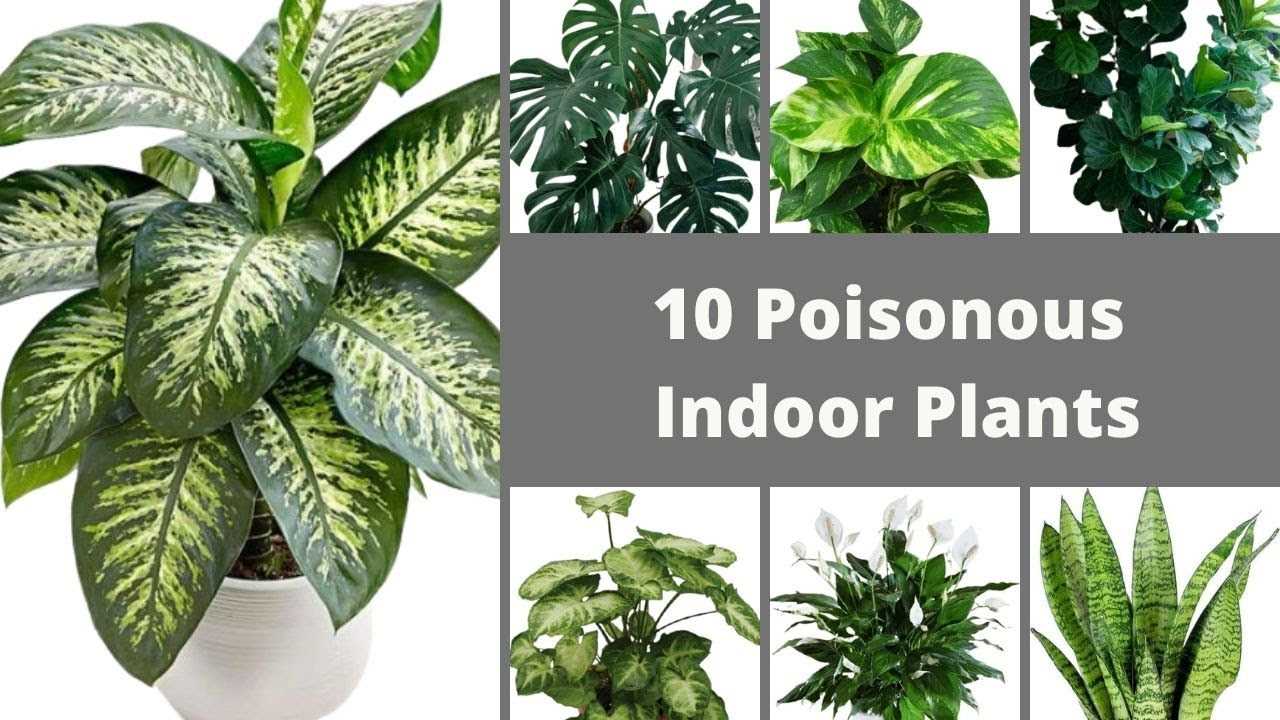
If you have toxic plants in your home, it’s a good idea to display warning signs or stickers near the plants to alert others about their potential hazards. This is especially important if you have visitors who may be unaware of the risks.
6. Regularly Clean and Prune
Regularly cleaning and pruning your plants can help minimize their risk. Remove any dead leaves or flowers, as these can harbor bacteria or attract pests. By keeping your plants healthy, you reduce the chances of accidental contact with toxins.
7. Know What to Do in an Emergency
In the event of accidental ingestion or contact with a toxic plant, it’s important to know what steps to take. Familiarize yourself with the recommended first aid procedures and contact a healthcare professional or poison control center immediately.
By following these safety guidelines, you can enjoy the beauty of indoor plants while minimizing the risks associated with toxic varieties. Always prioritize the safety of yourself, your family, and your pets when handling houseplants.
Treating Plant Poisoning
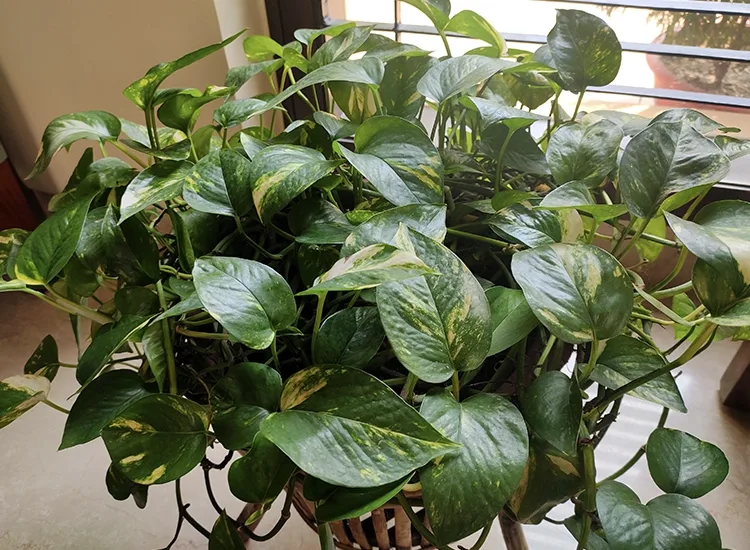
- Step 1: Identify the plant that caused the poisoning. Look for any remains of the plant or any other visible signs that can help identify it.
- Step 2: Remove any remaining parts of the plant from the individual’s mouth, hands, or any other affected areas. Be careful while doing so to avoid any further injury.
- Step 3: Rinse the affected areas with water to remove any residue from the plant.
- Step 4: If the individual has ingested part of the plant, do not induce vomiting unless instructed to do so by a medical professional. Vomiting may cause further damage or complications.
- Step 5: Contact a poison control center or seek medical attention immediately. Provide them with as much information as possible, including the plant’s name, symptoms, and any known allergies or medical conditions of the affected individual.
- Step 6: Follow the instructions provided by the medical professionals. They may recommend further treatment, such as activated charcoal to absorb any remaining toxins in the digestive system.
- Step 7: Monitor the individual for any changes in symptoms or the development of new symptoms. If the condition worsens or new symptoms appear, seek immediate medical assistance.
- Step 8: Take preventive measures to avoid future plant poisonings. Educate yourself and others about the harmful indoor plants and their potential risks. Keep all poisonous plants out of reach of children, pets, and individuals who may be prone to accidents.
Q&A:
Which indoor plants are poisonous to cats?
Some of the indoor plants that are poisonous to cats include lilies, philodendrons, dieffenbachia, and Easter lilies.
What are the symptoms of plant poisoning in pets?
The symptoms of plant poisoning in pets can vary depending on the type of plant ingested, but they may include vomiting, diarrhea, difficulty breathing, drooling, weakness, and loss of coordination.
Are all species of a specific plant poisonous?
No, not all species of a specific plant are poisonous. While some plants have toxic parts, such as the leaves or berries, others may only be poisonous if ingested in large quantities.
What are some non-toxic indoor plants?
Some non-toxic indoor plants include spider plants, Boston ferns, areca palms, and African violets.
How do I keep my pets safe from poisonous houseplants?
To keep your pets safe from poisonous houseplants, you can place them in hanging baskets or on high shelves where your pets cannot reach them. You should also consider replacing toxic plants with non-toxic ones.
Can indoor plants be harmful to humans?
Yes, some indoor plants can be harmful to humans if ingested or if their sap comes into contact with the skin. It is important to be aware of the potential dangers and choose indoor plants carefully, especially if you have young children or pets.
Video:
8 Poisonous House Plants That Are Dangerous for Children and Pets







